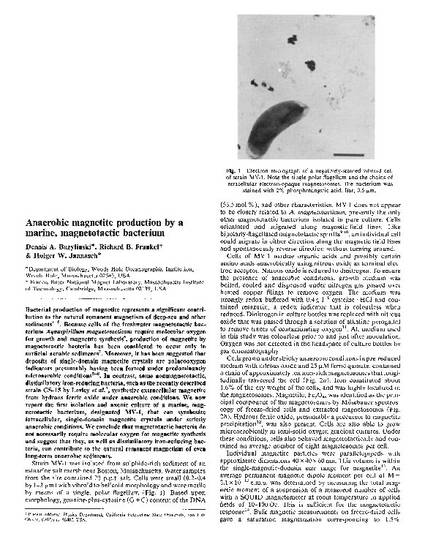
Bacterial production of magnetite represents a significant contribution to the natural remanent magnetism of deep-sea and other sediments1–5. Because cells of the freshwater magnetotactic bacterium Aquaspirillum magnetotacticum require molecular oxygen for growth and magnetite synthesis6, production of magnetite by magnetotactic bacteria has been considered to occur only in surficial aerobic sediments7. Moreover, it has been suggested that deposits of single-domain magnetite crystals are palaeooxygen indicators presumably having been formed under predominantly microaerobic conditions5–8. In contrast, some nonmagnetotactic, dissimilatory iron-reducing bacteria, such as the recently described strain GS-15 by Lovley et al. 7, synthesize extracellular magnetite from hydrous ferric oxide under anaerobic conditions. We now report the first isolation and axenic culture of a marine, magnetotactic bacterium, designated MV-1, that can synthesize intracellular, single-domain magnetite crystals under strictly anaerobic conditions. We conclude that magnetotactic bacteria do not necessarily require molecular oxygen for magnetite synthesis and suggest that they, as well as dissimilatory iron-reducing bacteria, can contribute to the natural remanent magnetism of even long-term anaerobic sediments.
Available at: http://works.bepress.com/rfrankel/148/
